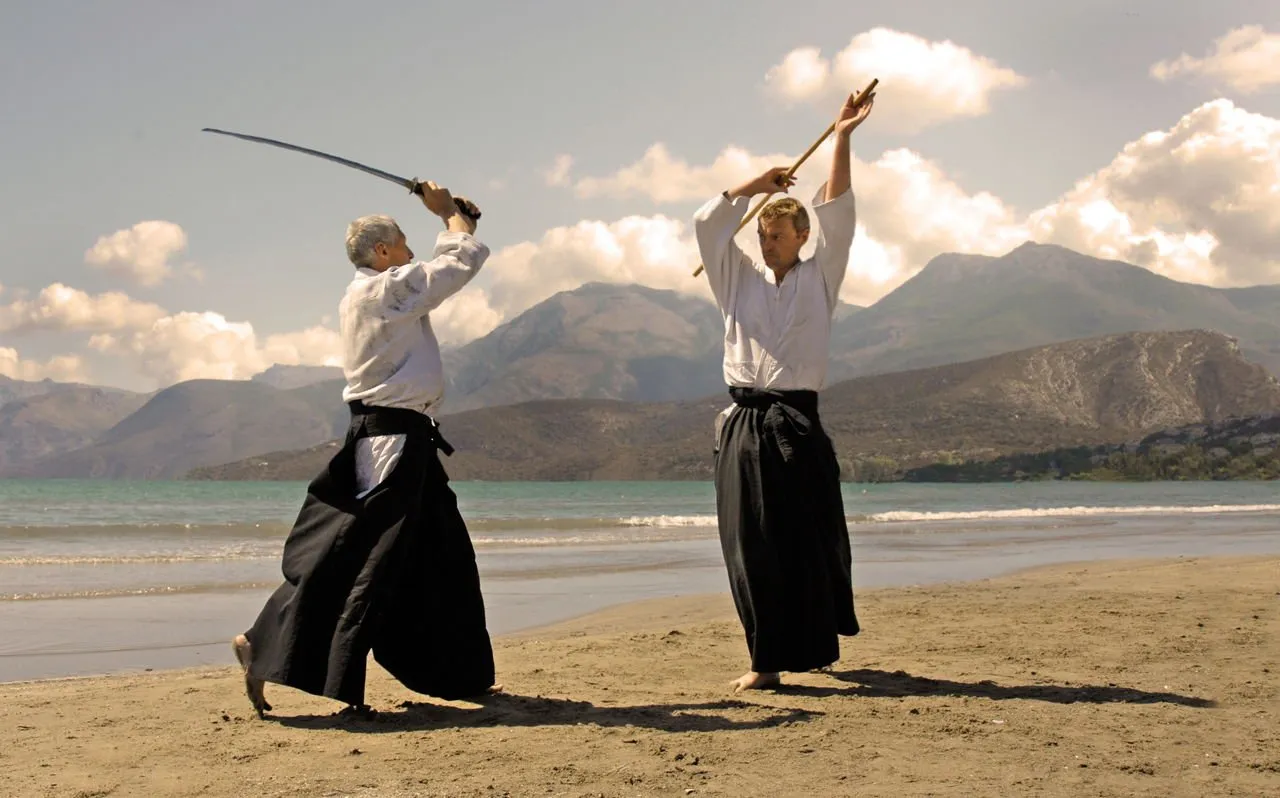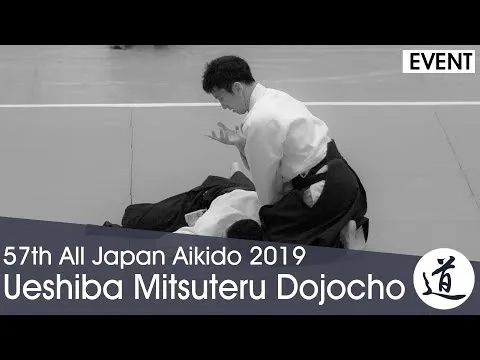There is this martial art that isn't really meant for fighting. Rather it's a philosophy, a way of existence and a pratice that greatly involves the body and its conscious training, as a symbol for how to deal with challenges in life and how to meet them as they arise.
And though I have only praticed Aikido for a few months years ago, it's high up on my to-do list to pick back up when I'm out on the road and have the chance to come by places where it is practiced.

What is Aikido?
In laymen's terms on a purely martial arts-related level, Aikido will teach you how to use the force and aggression of an attacker and turn it against himself. The harder he attacks you, the harder he will be thrown to the ground or locked into a position where he can no longer cause harm.
Where other martial arts practice active "attack" routines and techniques, Aikido only teaches defense. Because that is all that is ever required.
When I heard this notion for the first time I knew I wanted to check it out. It's a philosophy that has always seemed valuable and viable to me and when it comes to conflict resolution and communication between people, nations and cultures there really seems to be no better way of instilling an understanding, even when both sides are meeting on completely different terms and may start off on the wrong foot.
Doing Aikido involves practicing certain locking techniques of the body, "sweet spots" so to speak, where you can quickly disarm any attacker by utilizing torque and the bodies' momentum as they "interact" in the confrontation.
Aikido practice also involves fighting with swords (during practice we use wooden swords but it is as much a hand-based martial art as it is sword-based). You will also learn how to disarm attackers with guns in the most effective and quickest way possible without getting shot.

As such, Aikido is perfect for people of any size and strength, especially women who are generally less bulky and who could never hope to outperform a muscular attacker in mere strength. Luckily, Aikido does not rely on strength, especially once you get good at using the fluidity of movement to your advantage. Rather it teaches you a great deal about the anatomy of the body (learning by doing, a practical approach rather than a theoretical one) and it will also teach you that no amount of thinking before a situation can actually prepare you for what is coming, only presence in the moment can hope to allow you to move with things as they happen. A cluttered mind will not be open to perceive the sweet spots, the field of the moment and what is happening but will be clinging onto scenarios that might play out completely different or never happen at all.
It's like a goalie in soccer. He can't expect the penalty kick to go into the right corner of his goal, he has to stay centered and open to what is actually happening if he wants to succeed.
In that, Aikido seems a lot like a psychedelic experience or like meditation in that you have to get with the flow of life instead of fighting it with your ego and its clingy approach.
Aikido will teach you to stand firmly and always use the center of your body's momentum to your advantage, which we will dive in more in later parts. It's a solid practice for being rooted in your core and to be able to deal with onslaughts of all sorts, even by multiple attackers as you become sort of the eye of the hurricane around which everythign swirls.
Like a rock at the shore only more adaptable.
On an interpersonel level, Aikido's aim is never to do harm but rather to prevent harm from coming to you, and to give the "attacker" a chance to rethink his approach by simply disarming or stunning him in some way. And if he really wanted to attack you again, he can (if he was really that audacious). He will only land on the floor once more until he chooses to go for dialogue instead. What a marvellous concept of handling human adversity, and one that could teach us all a lot about interaction with people we don't particularly care about.

Harm prevention
Apart from dealing with confrontations and schooling your presence to the moment Aikido will also teach you how to prevent harm when falling and how to prevent serious injury when losing your balance. A large part of the training involves moving your body in ways that diffuse potential damage that could come to you were you to trip over something unexpectedly. This is also the reason why Aikido practice looks so "weird" to most common people - as both participants are heavily trained in diffusing attack and softening their own fall, which is why it can sometimes look more like a dance than a martial art.
Before I end this part I find it only fair to include some impressions of Aikido here for you, before we dive deeper in the next part of this series.
Here are some impressions from the Japan tournaments where Aikido originated and is still practiced to this day. Just watch the flow, and if Aikido seems interesting to you consider following up on this article in the next part of this series.

wordpress.com
pixfeeds.com
unsplash.com